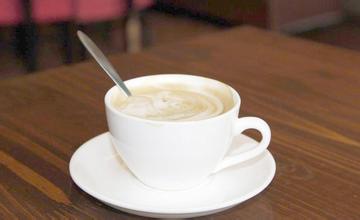Panamanian Coffee with strong Fruit Flavor: an introduction to the grindability of Panamanian Coffee
The Panamanian flag was adopted on November 3, 1904, and is rectangular in shape with an aspect ratio of 3:2. The flag consists of four rectangles of white, red and blue. White symbolizes peace; red and blue represent the Liberal Party and Conservative Party of Panama, respectively, and are also symbols of the unity and struggle of the two parties for the interests of the nation. The blue star on the upper left represents loyalty and integrity, and the red star on the lower right represents the authority of the law. The design of the crosshairs divided into four sections represents Panama's location at the junction of South America, North America, the Atlantic Ocean and the Pacific Ocean. Red, blue and white are the colors of the United States Star Spangled Banner, which supports Panama's independence. The flag was designed by Manuel Amador Guerrero, Panama's first president, in 1501, when Panama became a Spanish colony. On November 3, 1903, the Republic of Panama was established. The Panama Canal, which connects the Atlantic Ocean and the Pacific Ocean in the center of Panama, has an important strategic position and is the boundary between South and North America. On December 31, 1999, the United States returned all land, buildings, infrastructure, and management of the Panama Canal to Panama. Because of its important geographical location, Panama's economy focuses on services, mainly finance, trade and tourism. The financial industry and entrepot trade are developed and occupy an important position in the economy.
BOQUETE Panama is located in Chiriqui province on the border with Costa Rica. It is the origin of Panama's famous GEISHA coffee and is famous for producing high-quality Arabica coffee. TEDMAN & MACINTYRE ESTATE, located 4000 feet above sea level in the mountains of Porgate, originated from two of Panama's earliest coffee families, the TEDMAN family and the MACINTYRE family. In 1925, Canadian fruit merchant Alexander DUNCAN MACINTYRE (ALEXANDER DUNCAN MACINTYRE ) was infected by his brother Joseph and settled in Porgate. In the same year, he married ANGELA ROSAS and bought a manor named "LA CAROLINA" to start growing coffee. Their descendants still own the estate and have become one of the most famous coffee estates in the region, Panama Rose Summer: a rare wild variety and a frequent winner of various world tasting competitions. Raw beans slender appearance, ripe beans with unexpected citrus fragrance, full of floral aftertaste, sweet fruit. Absolutely unique coffee.
A very rare wild variety originating in Ethiopia, the bean probably derives its name from the coffee bean found near the local village of Guixia; the coffee tree is tall, has slender leaves, is resistant to coffee rust, and has widely spaced branches on the trunk. Raw beans are slender in appearance, ripe beans have strong, rich fruit flavor characteristics. This variety cannot be purchased commercially because of its low harvest.
Coffee was first grown in America in the 1720s. Coffee farming is now of great economic importance in Panama. The Republic of Panama was established on November 3, 1903. The nearly century-old coffee factory is located in a charming dense rainforest valley
Panama's first annual coffee export starts in November, with almost all of its premium beans destined for France and Finland. Panamanian coffee is generally low to medium priced, but it often performs as well in the cup as any famous, even expensive, coffee producer. Panamanian specialty coffee is among the highest selling prices on international markets. Panama coffee is grown in the west of the country, near Costa Rica and near the Pacific Ocean. The Boquet district of Chiriqui province is best known for its coffee production, as are Vocan and Santa Clara. Other districts include David, Remacimeinto, Bugaba and Tole. Only coffee grown at altitudes between 1,300 and 1,500 meters above sea level is considered special coffee

Important Notice :
前街咖啡 FrontStreet Coffee has moved to new addredd:
FrontStreet Coffee Address: 315,Donghua East Road,GuangZhou
Tel:020 38364473
- Prev

Description of Costa Rican Tarazhu Coffee Flavor with unique strong Flavor introduction to the Manor
Coffee is an important economic source of Costa Rica. It was introduced in 1808 and has been cultivated for 200 years. Costa Rica has 1x3 population invested in newly developed villa sarchi, newly developed villa sarchi and coffee-related industries. Colombians say that coffee has changed the country and enjoyed a rich environment, and coffee has indeed made an outstanding contribution.
- Next

Strong flavor of Indonesian Manning Coffee Flavor description, Grinding treatment, Taste characteristics, Fine Coffee
The gentleman in coffee-Sumatra Manning Mantenin is a fine coffee bean growing in the plateau and mountain area at an altitude of 750-1500 meters, implying a kind of tenacity and a great spirit that can be taken up and put down. It represents a kind of masculinity, drink with a kind of happy dripping, wanton, gallop scenery, this taste makes men fascinated. Life is full of Manning.
Related
- Detailed explanation of Jadeite planting Land in Panamanian Jadeite Manor introduction to the grading system of Jadeite competitive bidding, Red bid, Green bid and Rose Summer
- Story of Coffee planting in Brenka region of Costa Rica Stonehenge Manor anaerobic heavy honey treatment of flavor mouth
- What's on the barrel of Blue Mountain Coffee beans?
- Can American coffee also pull flowers? How to use hot American style to pull out a good-looking pattern?
- Can you make a cold extract with coffee beans? What is the right proportion for cold-extracted coffee formula?
- Indonesian PWN Gold Mandrine Coffee Origin Features Flavor How to Chong? Mandolin coffee is American.
- A brief introduction to the flavor characteristics of Brazilian yellow bourbon coffee beans
- What is the effect of different water quality on the flavor of cold-extracted coffee? What kind of water is best for brewing coffee?
- Why do you think of Rose Summer whenever you mention Panamanian coffee?
- Introduction to the characteristics of authentic blue mountain coffee bean producing areas? What is the CIB Coffee Authority in Jamaica?

